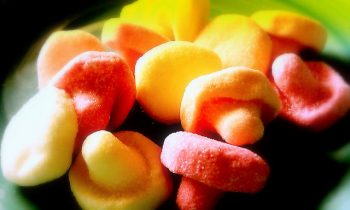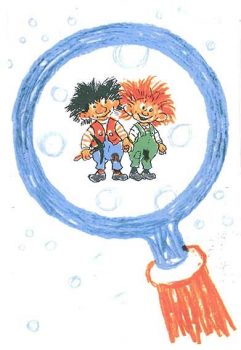Norwegian Candy Posted by Bjørn A. Bojesen on Nov 21, 2017 in Uncategorized
Er du en søtmons? (Do you have a sweet tooth?) In Norway, the nearest smågodt (sweets, candy) is never far away. Even small bygder (towns) usually have some kind of kiosk (pronounced ”shosk”) or butikk (shop) where you can buy søtsaker (sweets) to få opp blodsukkeret (”get up the blood sugar”) or simply create some kos in the dark and chilly vinter. But beware of Karius og Baktus (watch out for the explanation below)!
Kjært barn har mange navn (”that child which one is fond of has many names” = we find many names for those we love). Since Norwegians are so fond of smågodt (”little goody”), it’s called a lot of things, including snop, knask and godterier.
Løsgodt (”loose goody”) is exotic to people from Japan and some other countries. Instead of buying pre-packed candy, you mix your own pose (bag) of favourite sweets, which you pick from open boxes using a small spade (shovel). You then weigh your bag on a vekt (scales), and prisen du må betale (the price you have to pay) is decided by the vekt (weight – yes, that’s a word with more than one meaning! 🙂 )
Hva skal jeg velge? (What should I pick?) Here are some pieces to consider for your kveldskos (evening kos) or lørdagsgodt (Saturday sweets – many families have this tradition, and lots of kids would wish that every day was a Saturday!)
- sjokolade (chocolate) – Norwegian melkesjokolade (milk chocolate) is famous for a reason!
- vingummi (wine gum) comes in many shapes and farger (colours). Try the small, sugar-coated seigmenn (”tough guys”), a favourite at bursdagsselskaper (birthday parties)
- karameller (caramels) – in particular the ones sold as ”Twist” are popular
- kjærlighet på pinne (love on a stick) is a lollipop 🙂
- drops are like lollipops, but without the stick
- lakris (liquorice) is a very Northern European thing (in my experience). If you’re not used to the black ”gum” in your culture, be careful: Lakris is often not sweet at all, but rather strong or salty! 🙂 Do try the long lakrislisser (liquorice laces), which you can ”slurp” like spaghetti.
Of course, frukt og grønnsaker (fruits and vegetables) are better for your health than candy. All Norwegian children know the story of Karius og Baktus (by Thorbjørn Egner) – two small ”bacterium trolls” that give the boy Jens huller i tennene (holes in the teeth), because he eats too much candy and forgets å pusse tenner (to brush his teeth). But then one day Jens visits tannlegen (the dentist), whose big bor (drill) destroys the buildings of Karius and Baktus. The poor little fellows escape on a flåte (raft), looking for a new candy-enjoying mouth to settle in!

Build vocabulary, practice pronunciation, and more with Transparent Language Online. Available anytime, anywhere, on any device.





